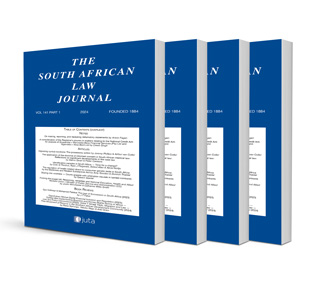
Sham trusts in South Africa: Tempora mutantur, nos et mutamur in illis (times change, and we change with them)
Author Bradley S Smith
ISSN: 1996-2177
Affiliations: Professor, University of the Free State
Source: South African Law Journal, Volume 136 Issue 3, p. 550-580
Abstract
Although it is trite that five essentialia are prescribed for valid trust formation, the possibility of a court holding a ‘trust’ to be a ‘sham’ due to a finding that a trust founder never truly intended to create the trust is a relatively new feature of South African trust-law jurisprudence. While early attempts to define and characterise the sham trust concept may justifiably be criticised for conflating it with a situation where it is necessary to ‘pierce the veneer’ of a validly created trust, pioneering legal scholarship has contributed to an authoritative body of case law in which its theoretical underpinnings have become crystallised. However, only two (unreported) judgments have thus far dealt with the sham trust in practice. This article uses the latest of these (the unreported decision in Humansdorp Co-op v Wait) as a platform from which to interrogate the intention requirement and its inter-relationship with the requirement of sufficient trustee independence. The authority relied on in Wait is also utilised to develop conceptual linkages between the sham scenario, the ‘control test’ that is used in the veneer-piercing context, and the ‘core idea’ of the trust as articulated in the seminal judgment of Land and Agricultural Bank of SA v Parker 2005 (2) SA 77 (SCA). The article concludes that although Wait is not a model of clarity, it is a ground-breaking judgment that has elevated the ‘sham trust’ concept from theoretical possibility to practical reality.